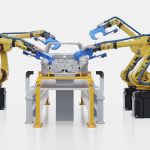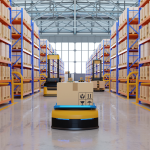While headlines may focus on robotic dogs and parcel bots, Evri’s latest pilots reflect a more pragmatic shift: automation that assists, not replaces, the courier.
Automation That Fits Around the Human, Not Instead of Them
Amid the swirl of announcements around delivery drones and autonomous vehicles, Evri’s upcoming trials offer a refreshingly grounded take on last-mile automation. The UK-based parcel firm will begin testing two types of delivery robots this summer—including a four-legged, van-hopping robotic dog—but the framing is crucial: these machines aren’t being positioned as courier replacements. They’re co-pilots.
This isn’t an isolated move. It mirrors a broader industry pivot toward human-centered automation—where the aim isn’t to remove labor, but to ease its intensity and improve consistency. Rather than betting on full autonomy, Evri is exploring modular support systems that complement the variable, high-touch realities of doorstep delivery.
As Marcus Hunter, Evri’s CTO, made clear: the courier remains the core of the service model. The robot, however futuristic it may look, is there to extend reach—not displace it.
Hyper-Local Pilots for Hyper-Practical Problems
The company is also trialling a lightweight delivery bot in Barnsley—a compact, electric unit capable of operating day and night on selected routes. Unlike traditional vans, these bots aren’t built for scale. They’re designed for edge cases: deliveries to households with accessibility needs, off-hours drop-offs, or areas where low-emission transit is a growing requirement.
Here, automation isn’t about novelty. It’s about coverage. By trialling robots on the margins—geographically and operationally—Evri is addressing small but persistent inefficiencies that can erode service or strain labor.
The partnership with Barnsley Council also hints at the next evolution of these trials: embedding logistics innovation within local infrastructure agendas, not just corporate pilots. As towns like Barnsley aim to position themselves as testbeds for digital public services, robotics becomes part of a broader regional economic narrative.
Where the Real Innovation Lies
What makes these trials noteworthy isn’t the hardware—it’s the restraint. In an industry prone to splashy demos, Evri’s approach is surprisingly utilitarian: robots that fit around current workflows, not platforms that require entirely new ones. It suggests a vision of automation that’s iterative, not transformative—a step forward in service of labor, not in place of it.
For other parcel firms navigating the dual pressures of volume growth and labor fatigue, this model is worth watching. It’s not about when robots will take over. It’s about how, in the near term, they can quietly make last-mile delivery more manageable, consistent, and humane.







